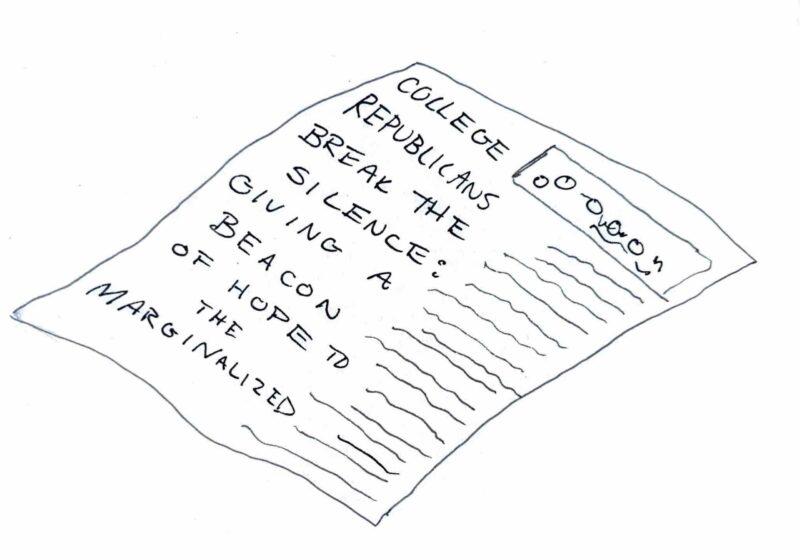Monsters are everywhere. They just wear different costumes during the day. Monsters are religious leaders. Monsters are coaches. They are doctors.
Over 160 women have ripped Larry Nassar of his Clark Kent–esque persona, revealing what he truly is — a monster. But for so long, he was a monster protected by Michigan State University and USA Gymnastics.
In one week, the entire board of USA Gymnastics and the president and athletic director of Michigan State all handed in their resignations.
One could even argue that until October 2017 the media also protected Nassar. Instead of covering his firing in September 2016 or even examining a detailed report from the Indianapolis Star, outlets instead were contemplating what it meant to be a “nasty woman,” along with reporting on those “damn emails.”
In 2011, Jerry Sandusky was indicted for child molestation. Joe Paterno and all Penn State athletics became a sore subject. While many find the Nassar case to be reminiscent of Happy Valley’s fall out, there’s a stark difference. The outcry succeeded the accusations; the story broke across the country immediately. There was no buildup of charges or a neglected newspaper investigation.
Was the reason simply embedded in that this was a situation involving gymnastics, a sport that the public only pays attention to every four years? According to author and journalist Jessica Luther, the blame should be put on sports media and its lack of women’s coverage. She argued that society cares about the “sporting institutions threatened” rather than the idea of abuse.
Rachael Denhollander, one of the first women to accuse Nassar, reinforced this idea during her testimony last week.
“So, I ask, how much is a little girl worth?, she said. “How much priority should be placed on communicating that the fullest weight of the law will be used to protect another innocent child from the soul-shattering devastation that sexual assault brings?”
The discourse following the Weinstein Effect and #MeToo is responsible for pulling this harrowing tale out of hiding. Credit is also due to the survivors, especially those who represented the U.S. on the world stage in London and in Rio.
Aly Raisman took a risk in November. After her former teammate McKayla Maroney came forward on Twitter a month earlier, the Olympian turned her PR campaign to market her book, “Fierce: How Competing for Myself Changed Everything,” into a platform to discuss Nassar and his abuse. Her interviews on “60 Minutes,” “The View,” and the “Today Show” shifted the national discussion, and slowly but surely, Americans at last knew Nassar’s name.
Raisman, Maroney, and many others fought for the coverage of their abuser, and urged for drama and attention in order to achieve similar press to Sandusky. Although Rosemarie Aquilina might have behaved questionably as a judge, we must acknowledge her role and the choices she made in hurling this story out to the world.
This was all brilliant, but it’s frustrating that theatrics and PR had be employed in the first place. In the future, I hope a massive PR scheme won’t be needed. The story is enough.
It’s ironic that many institutions have thought that to extinguish a fire, you must suppress it and stuff it in a vacuum, rather than quench it.
Part of what complicates the Nassar case are the many institutions that have their hands in the basket. The negligence and tackless efforts of Michigan State and USA Gymnastics have shifted our watch to the NCAA, which, although isn’t a law enforcement organization, is historically known to administer sanctions when necessary. Last Tuesday, the regulatory body inquired with the school to investigate its handlings of sexual assault cases beyond that of Nassar.
In examining institutions and holding them accountable, a next step post-Nassar may lie in Congress. Lobbying for the Safe Sport Authorization Act, a bill aiming to establish a center to developing training and policies to prevent abuse for amateur athletes, may be where we can start.
Jordyn Wieber, another Olympic gymnast from the 2012 team, addressed Judge Aquilina and called for more regulations surrounding supervision of minors, citing the amount of alone time she spent with Nassar.
While I sat and watched heart-wrenching testimony from young women tough as nails, I was moved by their sisterhood and allegiance.
We witnessed women controlling their own narrative and speaking out united. Michigan State and USA Gymnastics may have overlooked the worth of young women and girls, but it was their power and intuition that wrestled with and eventually removed a monster from under the bed.






